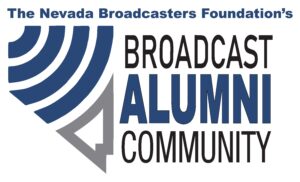
Comments are due on September 30 on the FCC’s Further Notice of Proposed Rulemaking looking to bring back some form of the old FCC Form 395B, the Annual Employment Report. That form required broadcasters to report on the racial and gender make-up of their workforce in various employment categories. The use of the form has been on hold for almost two decades after two rulings from the US Court of Appeals that found it was unconstitutional for the FCC to use the information collected from the Form 395B to determine if a broadcaster’s license renewal application deserved extra scrutiny. In effect, the court found using the reports in this way compelled broadcasters to make hiring decisions based on the race and gender of employment candidates, which was discriminatory and thus could not be compelled by the FCC.
This created a tension between a law requiring that the FCC gather information on the racial and gender make-up of the broadcast workforce to determine if affirmative action efforts should be made on an industry-wide basis, versus the prohibition on gathering this information on a station-specific basis where the temptation would always be to look at a specific station’s data and make assumptions about whether it had been in making employment decisions in color blind manner. While the FCC has over the last two decades repeatedly considered bringing back the form to collect information on an industry-wide basis, questions have always arisen as to how the accuracy and completeness of that information could be assured if the information gathered did not identify the station providing it. And, once that information was in hand, would it be subject to Freedom of Information Act (FOIA) obligations that could force its disclosure which could lead to it potentially being used in an enforcement context?
The current proceeding tackles these issues, asking questions about whether the collection can be done in a way that complies with both the court rulings and the statutory requirement to gather industry-wide data on the make-up of the broadcast workforce. The FCC notes that there is now a statute that allows agencies to set up data-collection arms to get industry data to assess broad trends, without subjecting that data to FOIA requests. Could portions of the FCC be designated to receive such information and keep it protected? Is that necessary, or can the information otherwise be divorced from individualized decisions about stations? If that information can be collected, how can the FCC assure that stations are accurately and completely reporting their data? Would the FCC have to conduct audits of the information – and what kinds of penalties would have to be assessed on stations that do not report at all or in an accurate fashion?
These are obviously thorny questions on which there are bound to be conflicting views. The proceeding also asks more mundane questions about the form itself, and whether the various categories used to identify employees at stations should be updated both as to their positions at the station and as to the racial and gender make-up of employees in each of those categories. The old form used broad categories such as “officials and managers”, “professionals”, “sales workers”, technicians”, “office and clerical”, “craft workers (skilled)” and other categories that may not reflect how workers are classified in today’s broadcast workplace.
Comments are due September 30, with replies to be submitted by November 1. This proceeding and any new obligations that the FCC may impose on broadcasters should be carefully tracked in the coming months.
Courtesy Broadcast Law Blog


